We left Baiona on Sunday (August 31) at sunrise, 8:00 and started our way towards Portugal. We rounded Cape Silleiro to then progress south on engine for a couple of hours as no wind was blowing. The wind then slowly picked up allowing us to stop the engine and continue on sail alone. After about 30 minutes of sail, we experienced our first squall on this trip. The wind picked up within something like 2-3 minutes from an enjoyable 5 m/s to 11-12 m/s with heavy rainfall. The stronger winds blew for roughly 5 minutes. When we go hit by this squall, we were going on beam reach with full mainsail and full genoa so the boat was a bit harder to steer during that short time but the wind then dropped as quickly as it increased leaving us again with no wind at all and no choice but to restart the engine. After an hour, a nice breeze from west picked up again and stayed with us the rest of the way until to Viana Do Castelo, our first stop in Portugal. A wonderful end of sailing day!
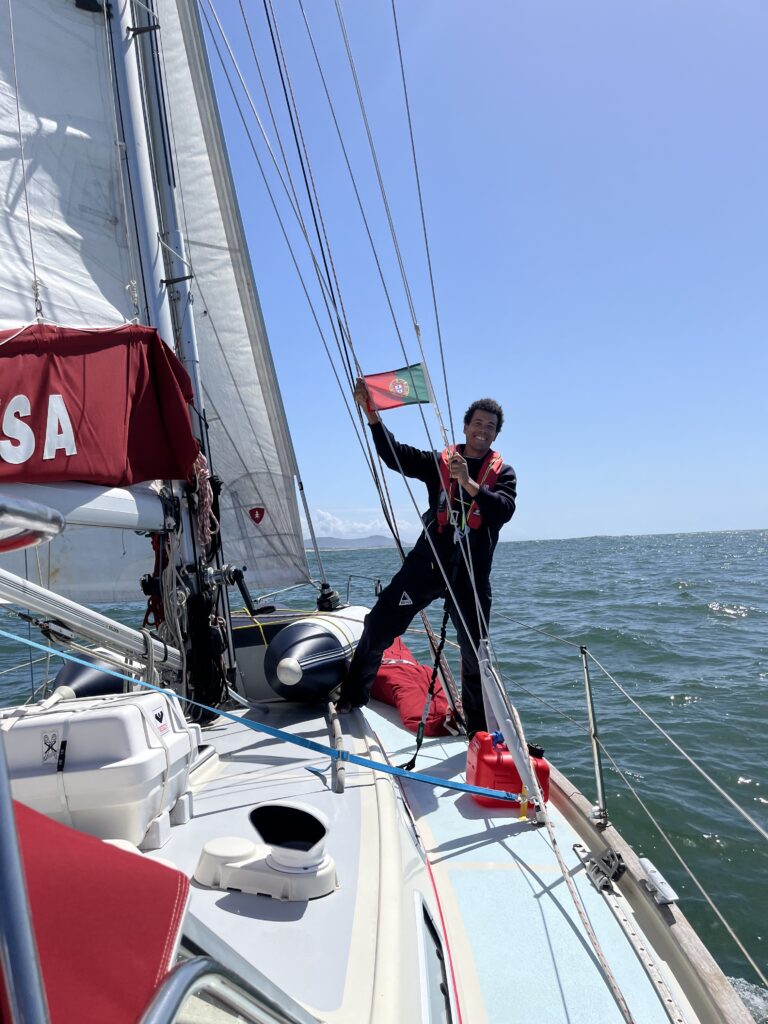
The pleasure craft harbor of Viana do Castelo is located about half nautical mile upstream the mouth of Rio Lima and to enter Rio Lima from the north we had to round the breakwater at the mouth of the river. There was a very nice atmosphere in the cockpit as we were happy to be reaching our first harbor in a new country but adrenaline went up a bit when we rounded the breakwater due to the bigger and steeper waves in that area. Although we knew those waves would not break where we were, they made us feel very small and reminded us who rules out there and that we always need to stay alert even on a sunny and warm day when everything seems perfect!
After 33 Nm from Baiona, we finally moored on the outer pontoon of the harbor of Viana do Castelo and put a first step of the trip in Portugal!
We remained moored on the outer pontoon for the entire stay despite one difficult night. That night the wind increased and turned against the current of the river that was quite strong as the tide was going down. This lifted waves that rocked the boat the entire night until the tide changed in the morning.
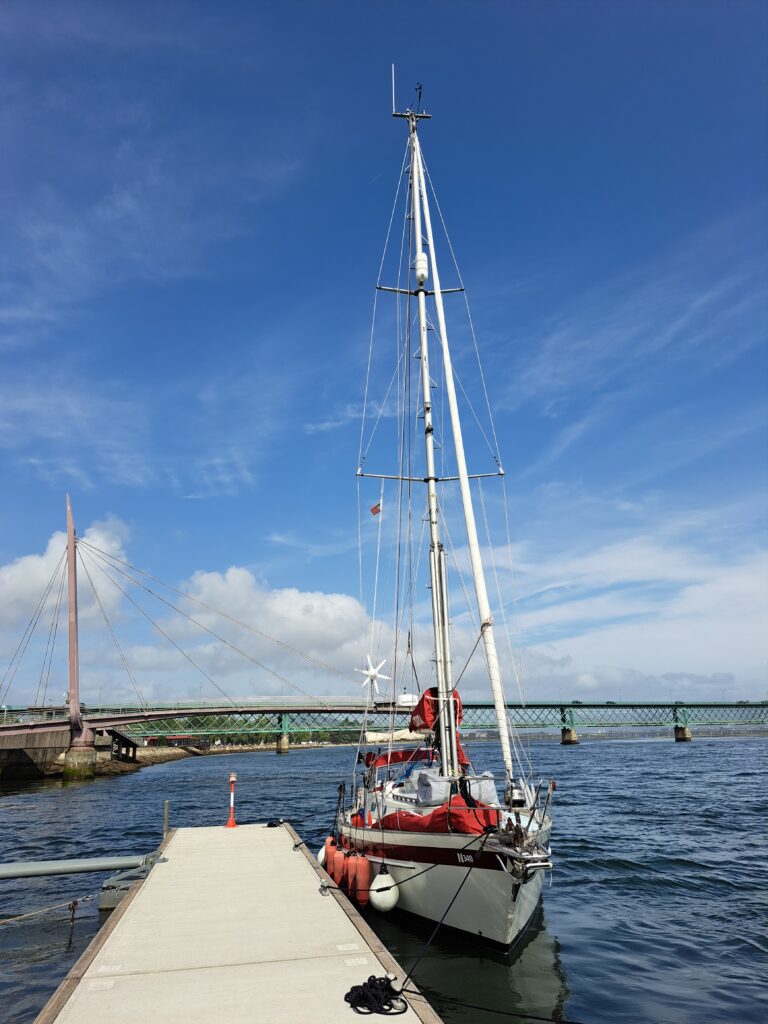
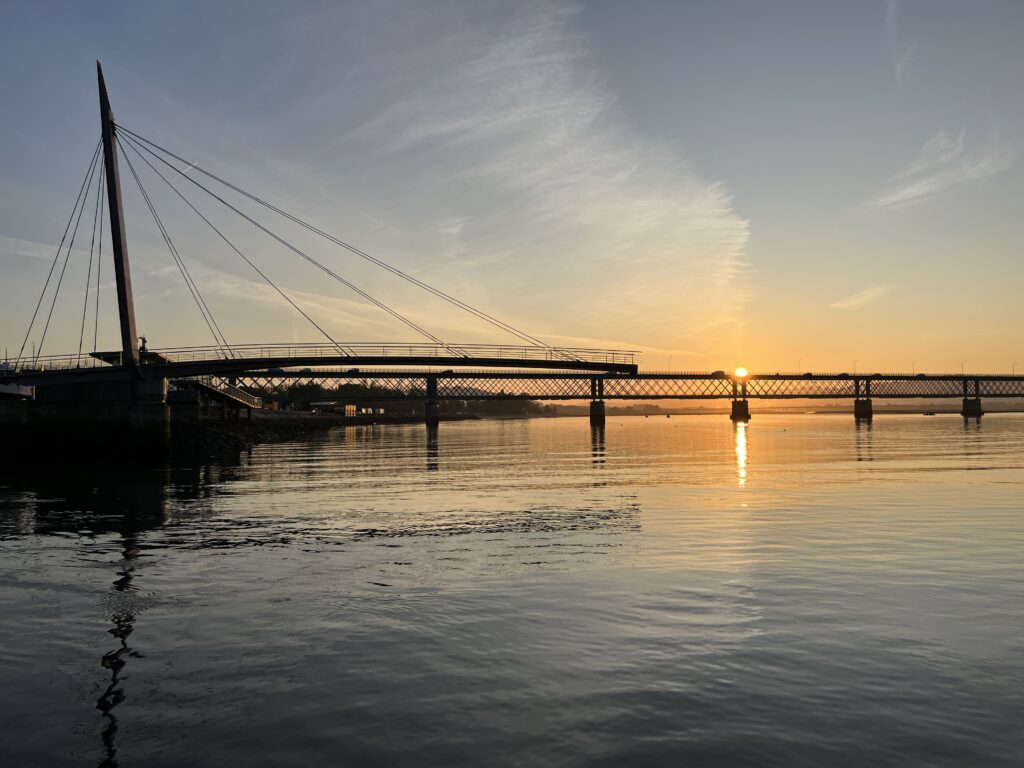
We stayed 5 days there waiting for a nice weather window with good winds in the right direction as we felt we had been motoring a lot during the previous weeks. We are not on a motorboat after all, sails must be up and possibly not flapping! So we took out our best tourist outfits and went to visit the surroundings, starting with the Santuário do Sagrado Coracão de Jesus (Sanctuary of the Sacred Heart of Jesus) that is located on the top of mount Santa Lucia. Located high up, this was the first building we saw coming from the sea when we were approaching Viana do Castelo. The location offers as well a great panoramic view over the coastline and the centre of the city of Viana do Castelo.
We found the centre of Viana do Castelo very charming with its old town and its houses covered with colorful glazed tiles that are quite characteristic of Portugese architecture.
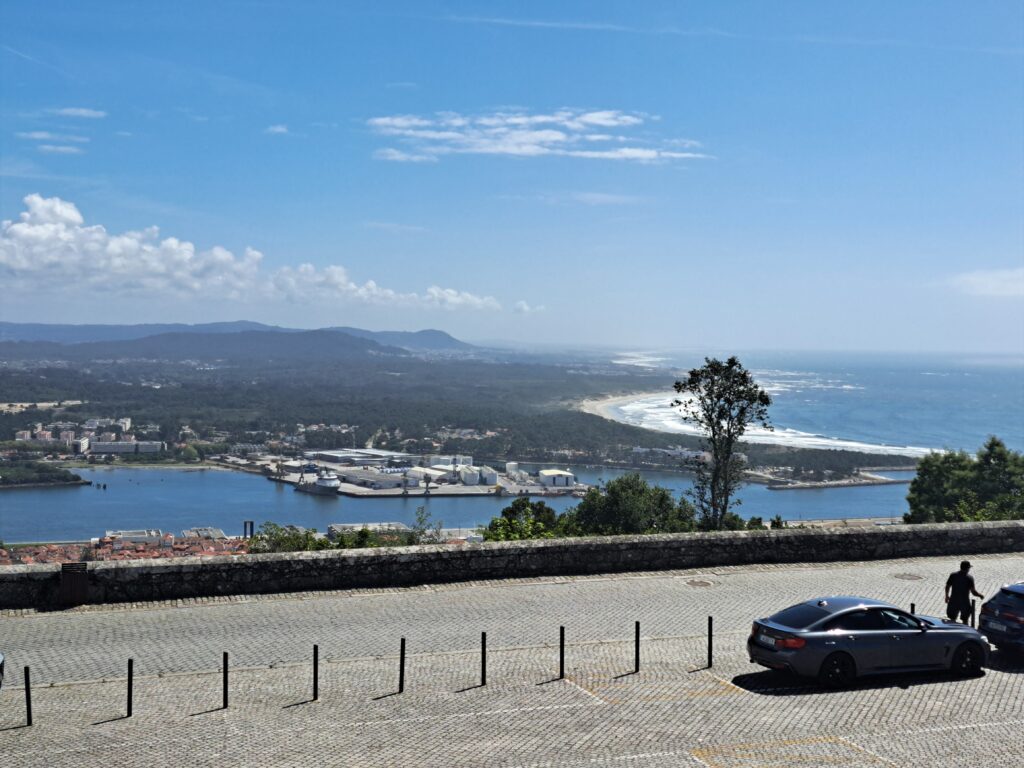
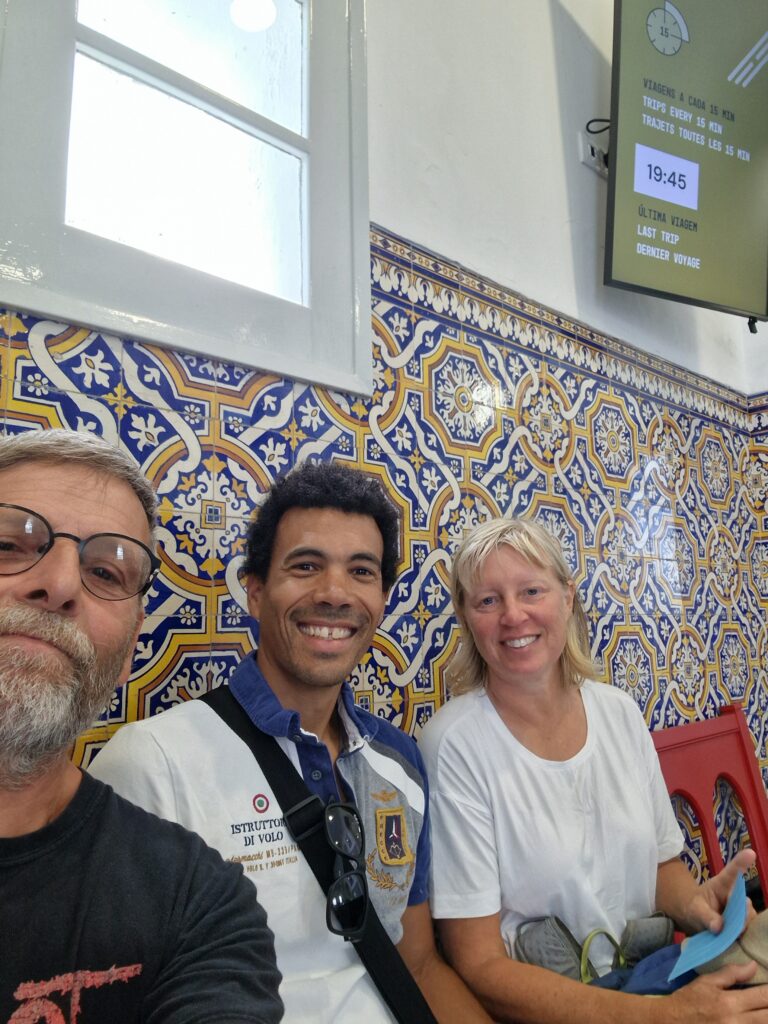
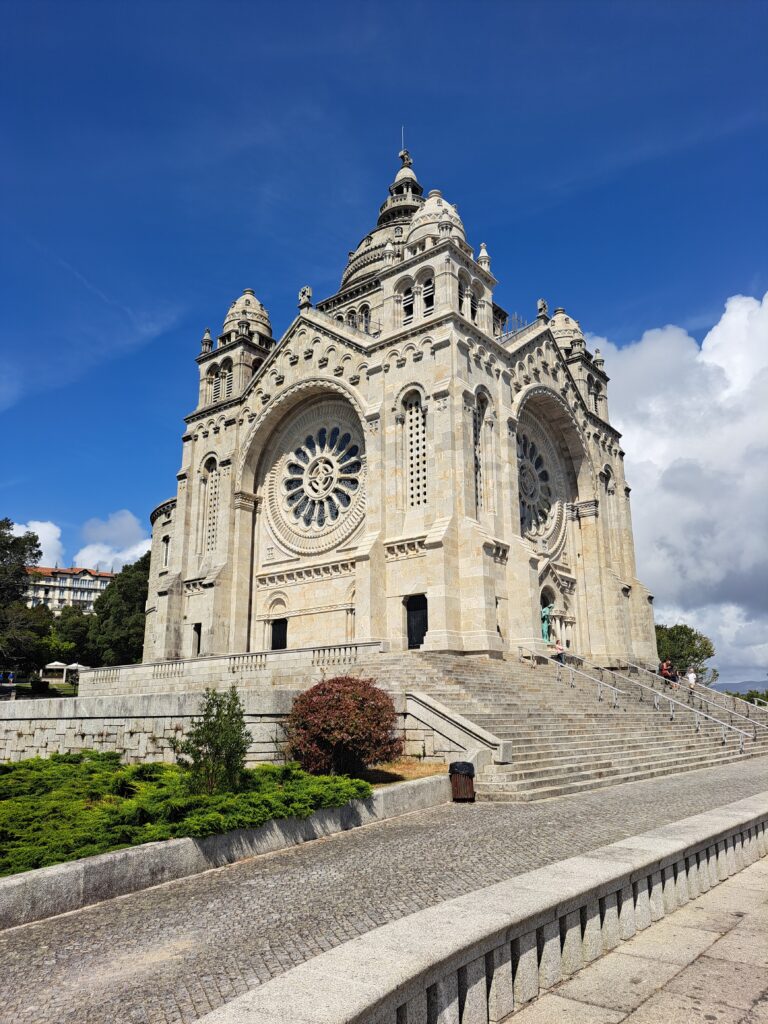

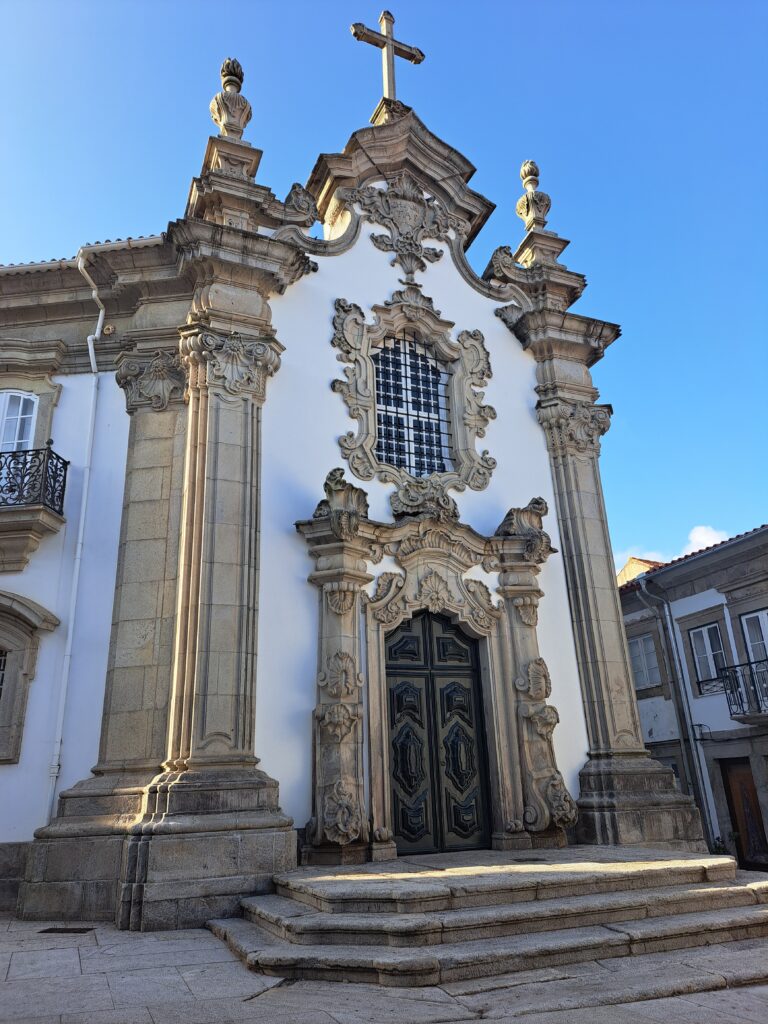
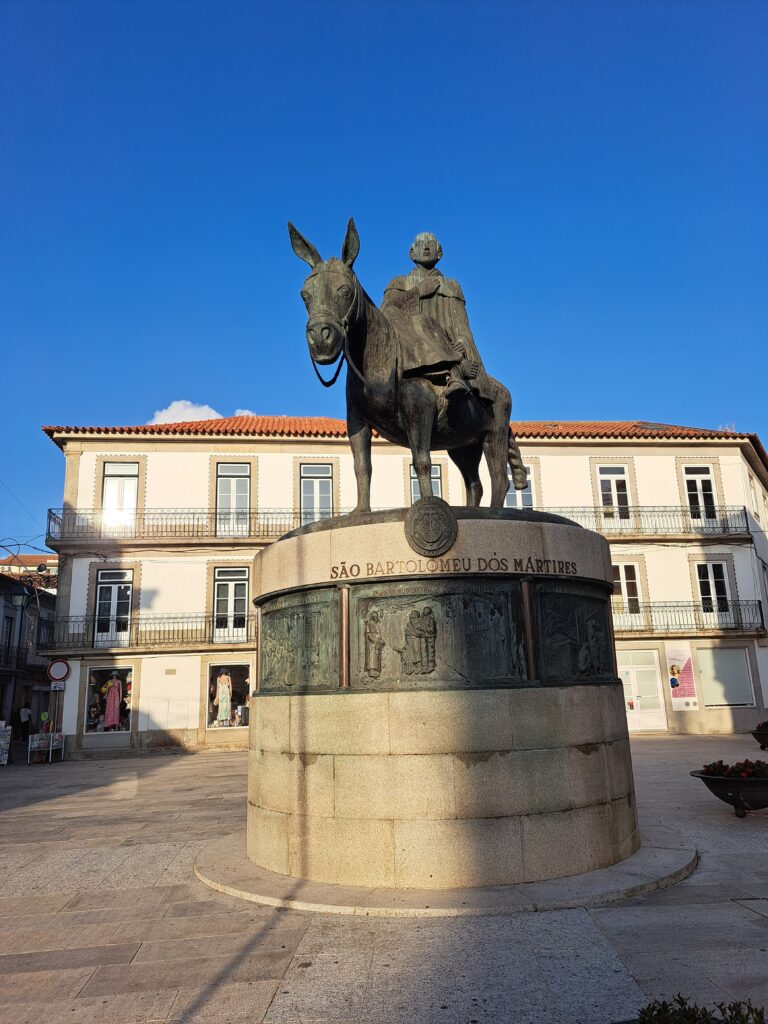
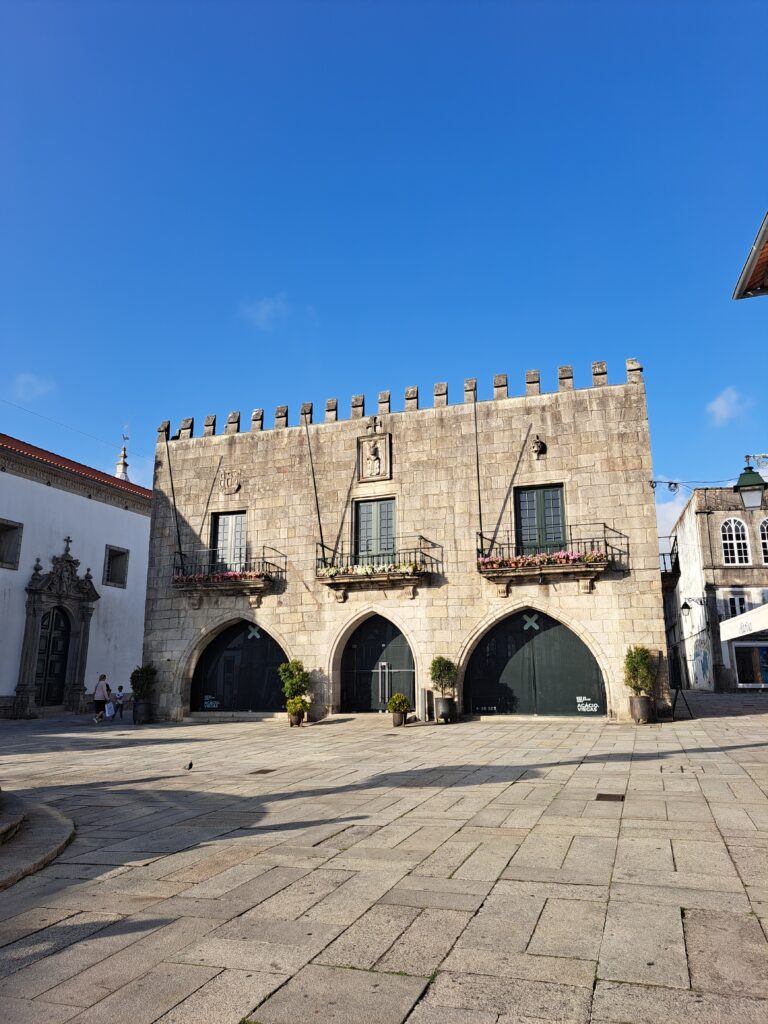
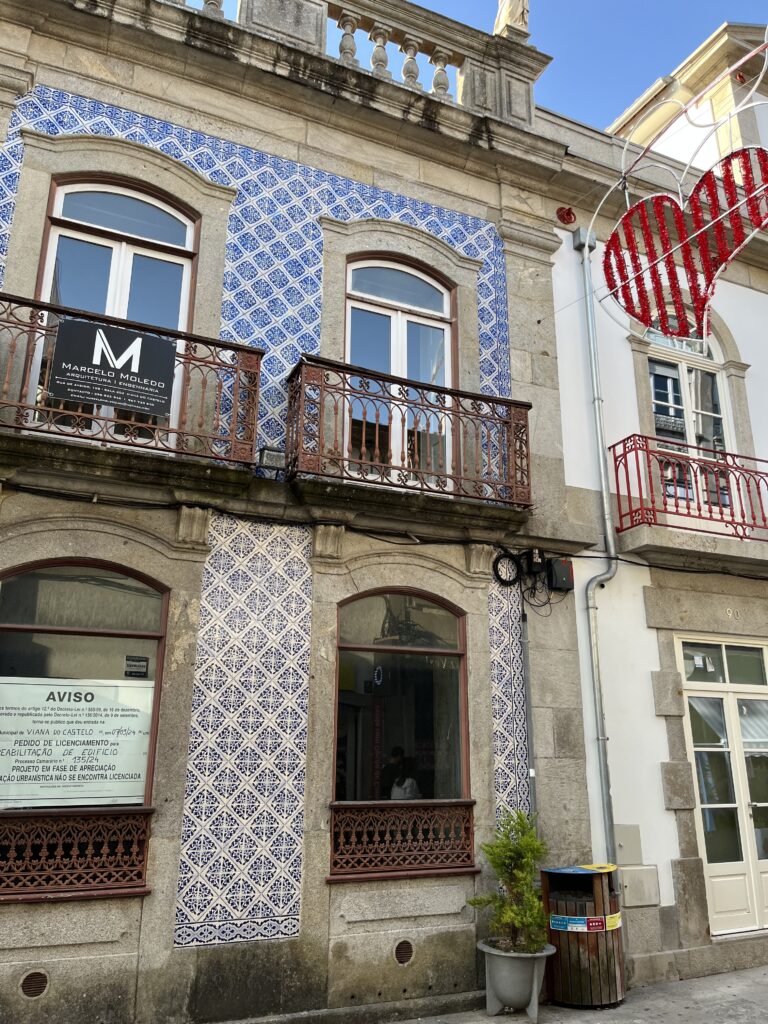
The harbor was also hosting the old hospital ship called “Gil Eannes” that is today a museum open for visitors. This ship was used to provide support to the Portugese fishing vessel fleet that was fishing cod on the banks of Greenland and Newfoundland, providing medical assistance, spare parts, and other supplies to the fleet. The boat was equipped with surgery room, X-Ray room, laboratory, rooms for contagious patients separated from rooms for recovering patients … a real hospital that was navigating in the middle of the cold sea. Not hard to understand why fishermen called her the “White angel”.
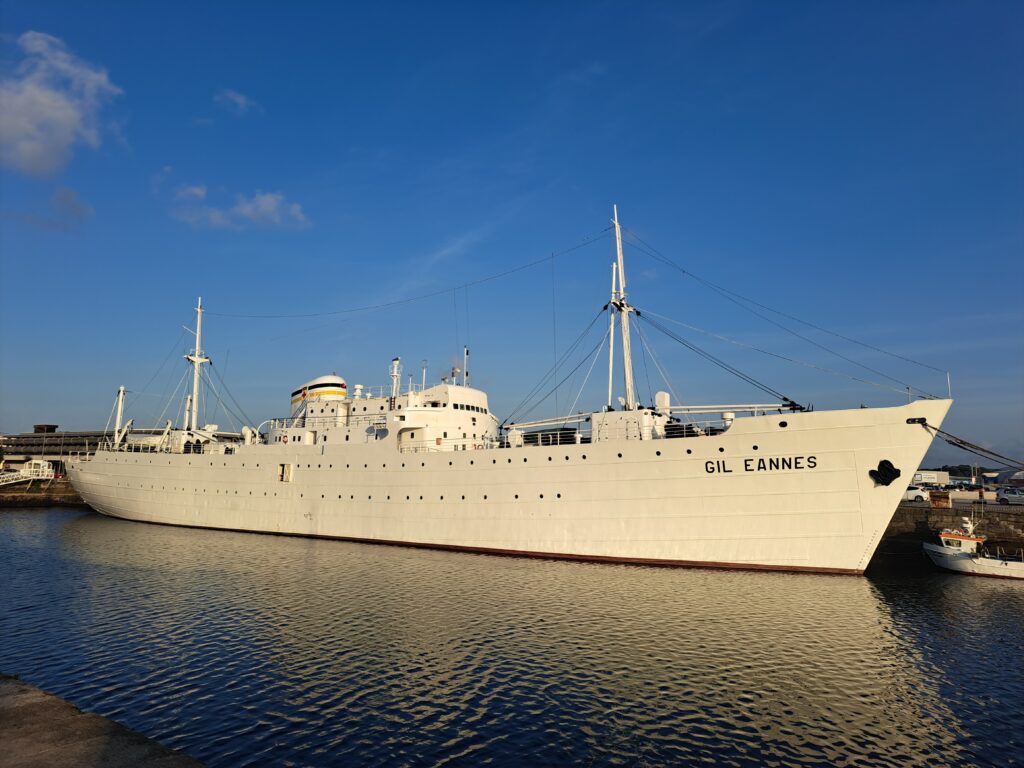
After a few days doing tourism in Viana do Castelo, some boat fix and deserved rest after sleepless nights, a weather window opened for us to leave on Friday (September 5) towards Porto under 9 m/s northerly winds and 1.5 to 2 m waves. We sailed the entire way with only the Genoa rolled out. We had a very smooth sailing even though we had to do a lot of slalom between the fishing buoys when we were actually able to see them. Because of the waves and reflecting water we could often see them only at the last moment when they were 50-100 m from the boat. Others we discovered only as we saw them passing by.
We arrived in Porto in the afternoon after 36 Nm under a wonderful blue sky.
We stayed in Porto only a couple of days, the time for a walk in the old town, to do some grocery shopping and visit a portwine cellar “Quinta Do Bom Dia”. Porto is a big and vibrant city and it would have deserved more time for a proper visit. As often, the winds decided for us. The evening prior to our departure, we gathered with other sailors at a restaurant table to enjoy grilled fish and meat and chat about our journey.
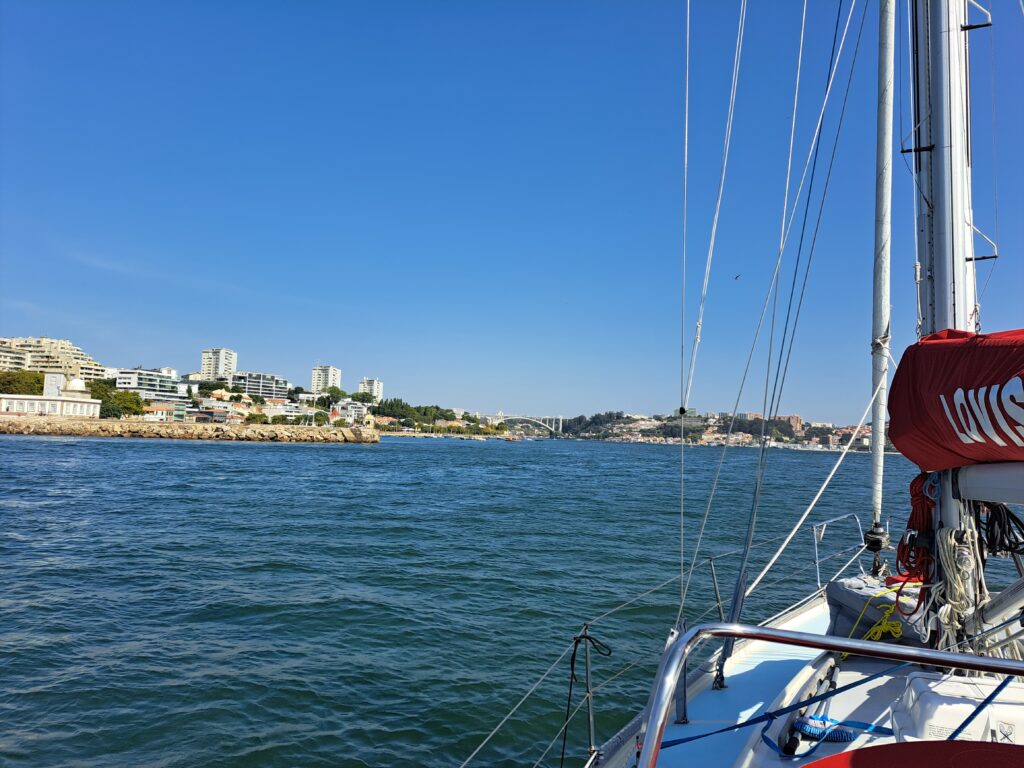
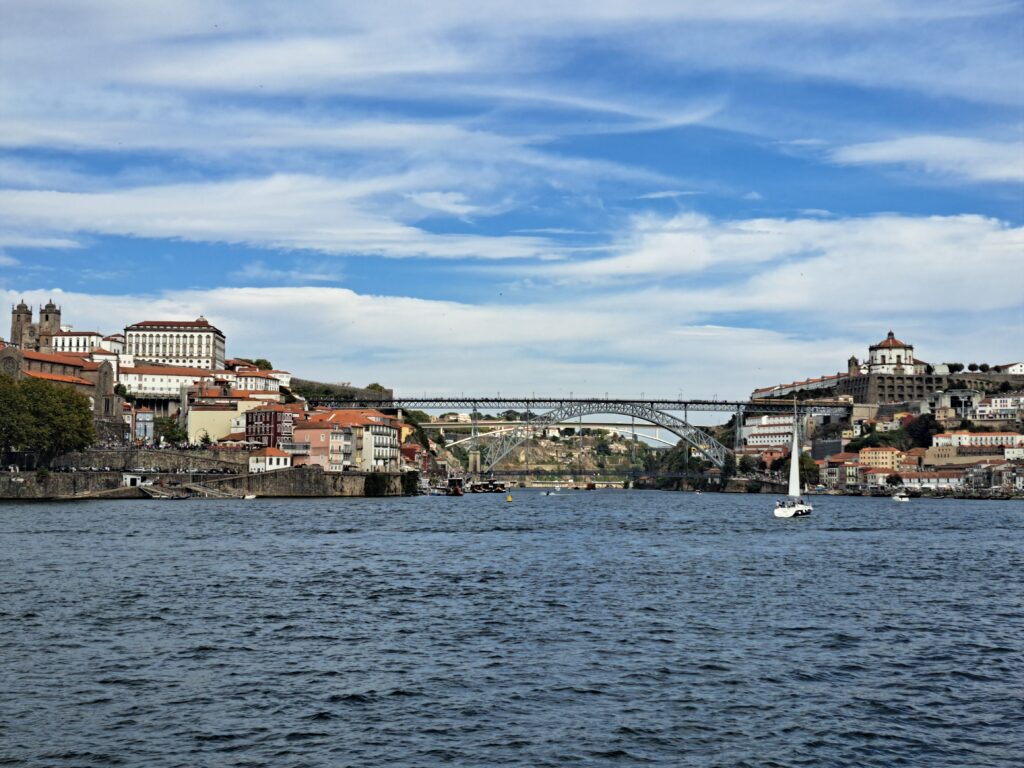
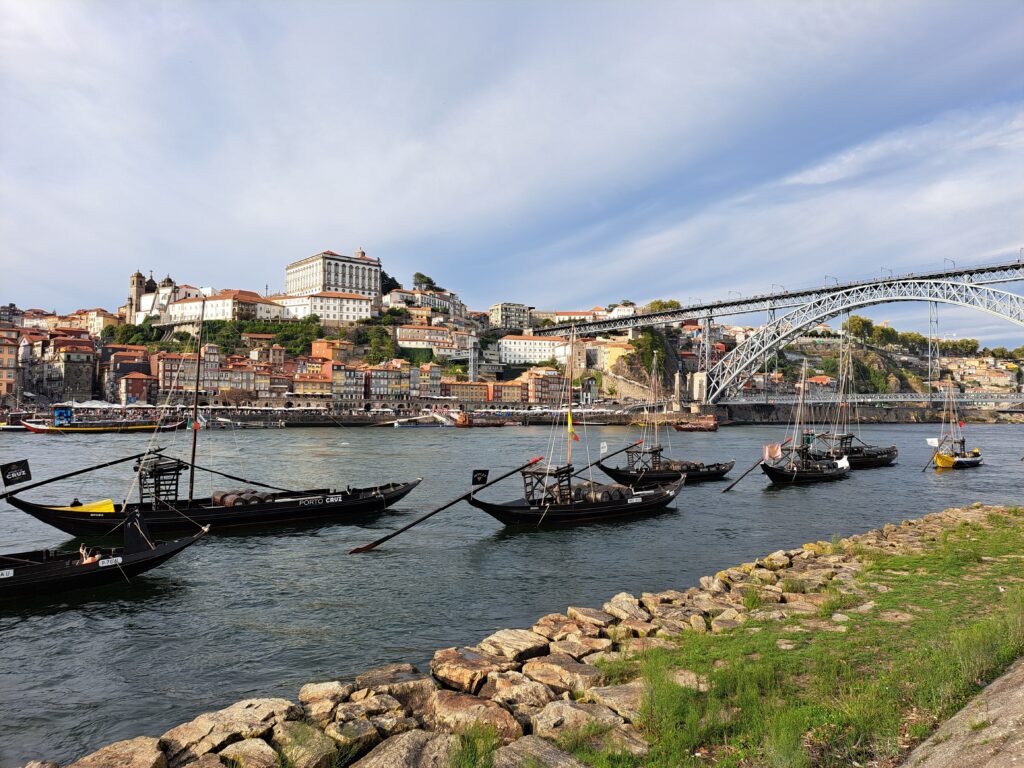
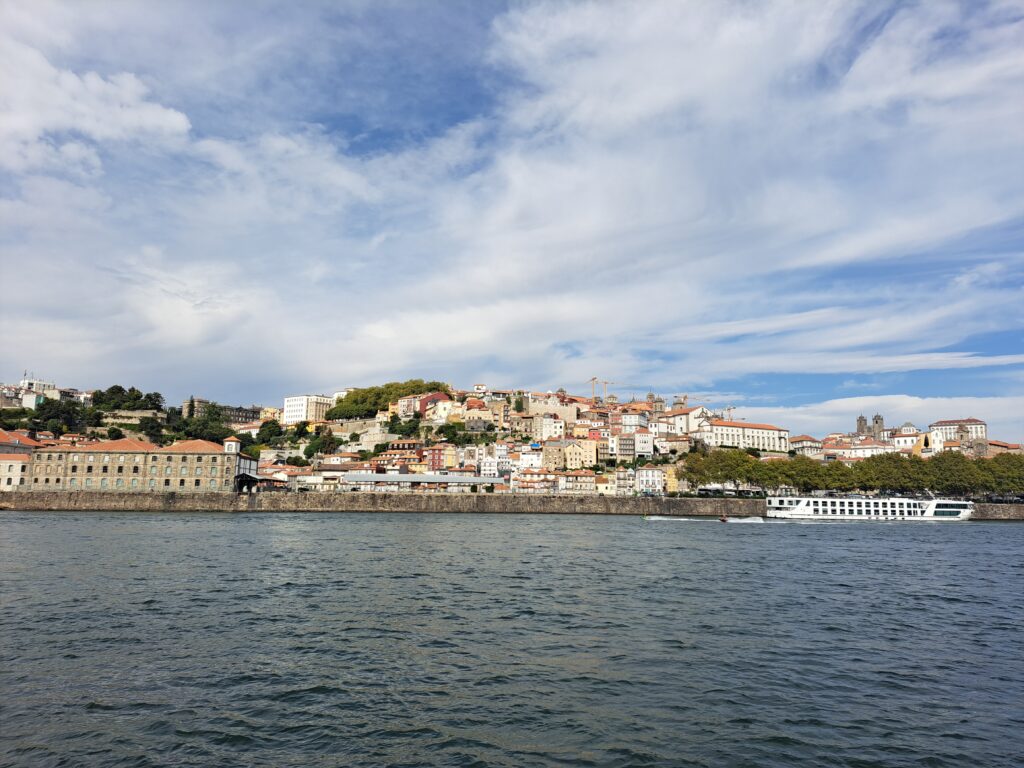
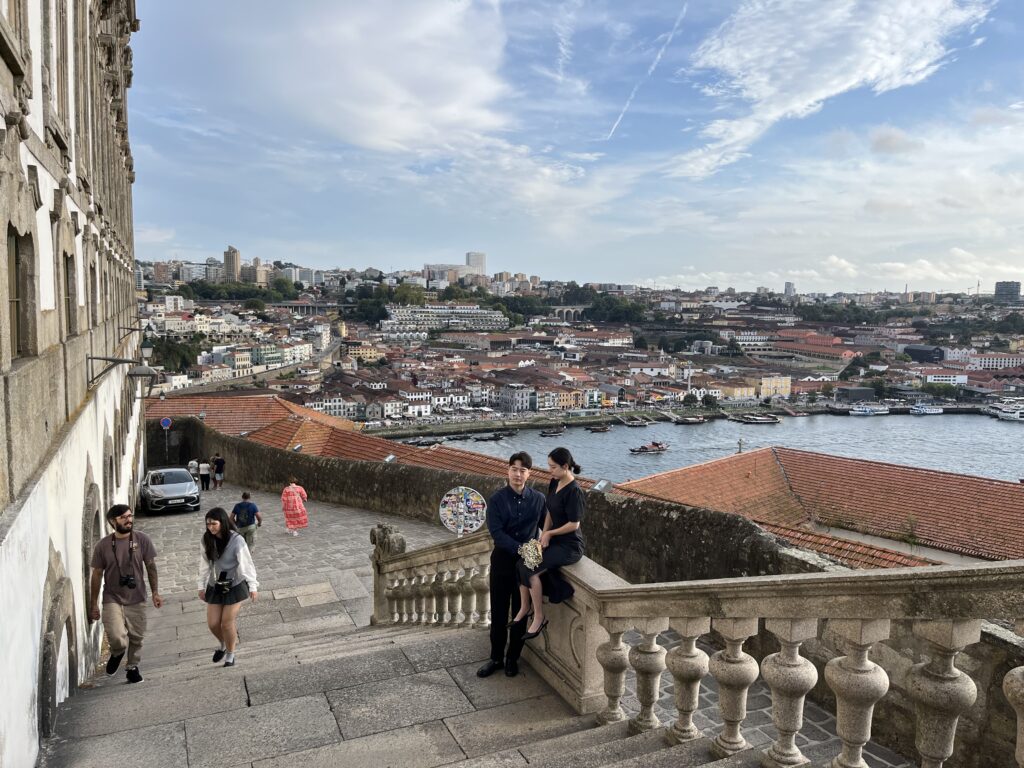
We left Porto in the early morning, 6:45, on Monday (September 8) towards Figueira Da Foz, 65 Nm south, taking the opportunity of the strong northerly winds that were expected to pick up quickly during the morning. After an hour or so with light wind, we enjoyed another very nice downwind sailing with winds between 11 and 14 m/s over most of the way with full main sail up and just a small piece of the Genoa rolled out. This was the first downwind sailing with such strong winds with Lovisa. We could appreciate how well she behaved in these conditions. We covered the 65 Nm in just 11 hours including the mooring operations in harbors. That’s a pretty good performance! We also signed a new speed over ground record with Lovisa reaching 11 knots in a surf. But overall we managed to maintain speeds over 7 knots for a long way and that’s a lot for our lovely Lovisa.
Even though we arrived at destination earlier than planned, we could visit Figueira da Foz only as intensively as we visited Sassnitz in Germany or Boulogne-Sur-Mer in France. In other words and unfortunately, we didn’t manage to put a foot beyond the harbor facilities.
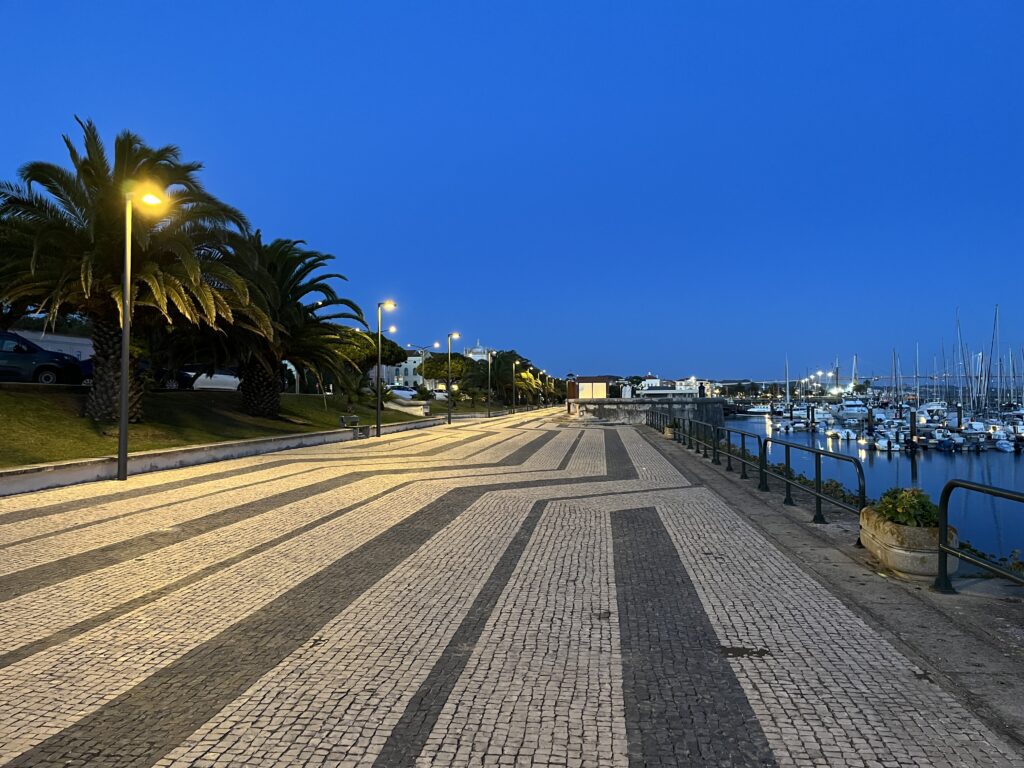
Although the 11 hours sailing were very fun, they left us tired. Too tired in the evening to take a walk and at 7 am the day after it was already time to leave again to catch the remains of the winds that we had the day before to reach Nazaré.
The start from Figueira da Foz on Tuesday (September 9) was fast with 8 m/s winds but it slowly decreased along the way. After 5 hours under sail, with several changes of sails, the wind decreased too much so it was not enough to keep the pressure in the sails and these started to flap with the boat rolling. Sitting on a sailboat with flapping sails is by itself a very exhausting experience, not to mention what it’s doing to the sails, so we took down the sails and completed the remaining 12 Nm to Nazaré on engine. The boat was still rolling but at least we didn’t have the sound of flapping sails.
On approach to the harbor of Nazaré we passed beside the famous Nazaré’s surf spot located just in front of Nazaré’s lighthouse. This place is known worldwide for its giant wave. Since we are not traveling on a surfboard we took care not to go too close to that specific spot, going around it instead.

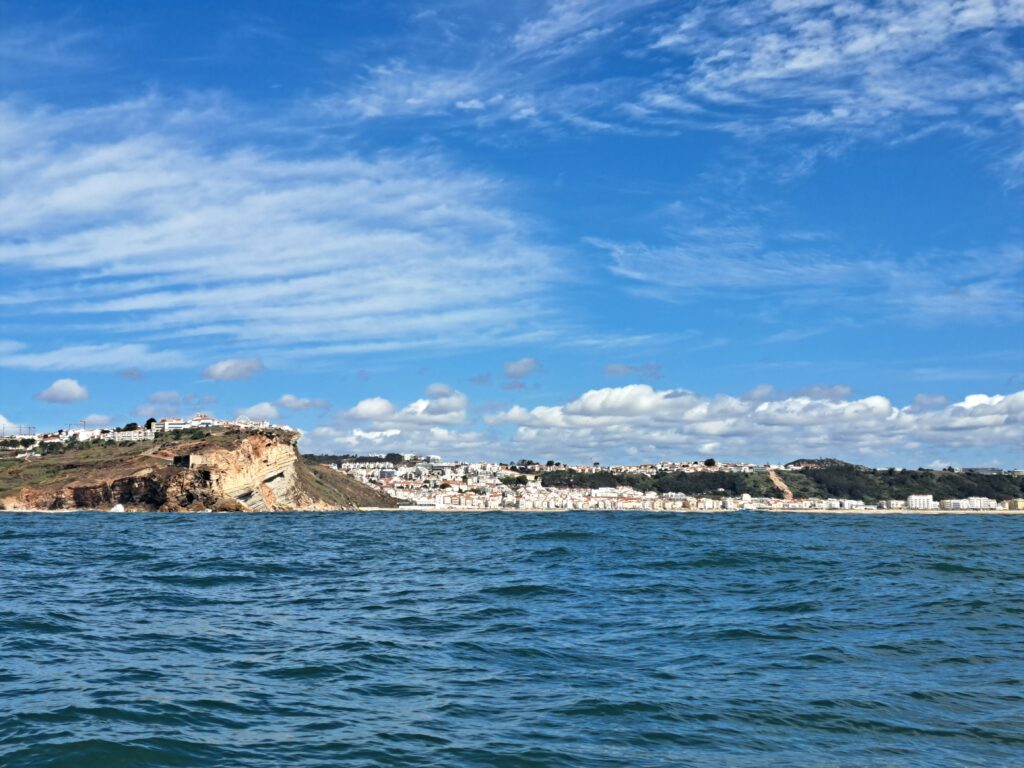

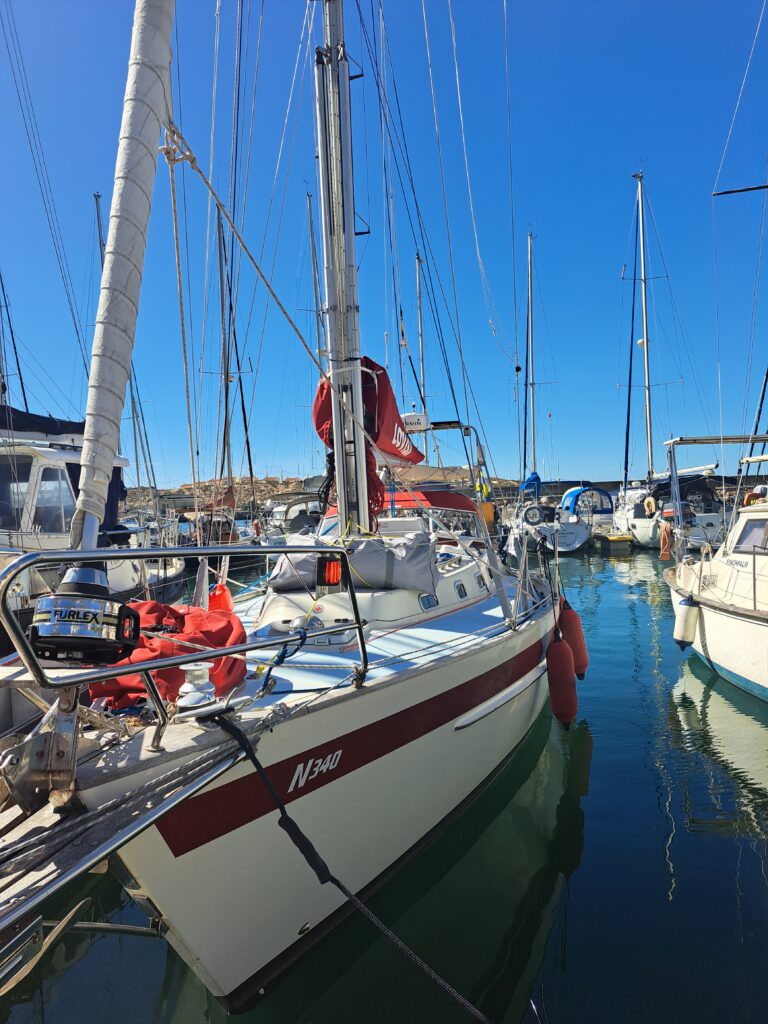
While we had a fantastic sunny and warm day on Tuesday, Wednesday was another story with clouds, fog and thin rain. What can we do on a rainy day? Sewing. Maria continued sewing the windlass cover until at some point the sewing machine jammed; the needle would not go up or down. Not with the motor, not by turning the wheel by hand. We bought an old PFAFF 360 German sewing machine from the sixties because it is known to be robust. These machines haven’t reached the vintage stores yet, rather you can still easily find them for sale in normal second hand sewing machine shops. After some investigations we found out the problem: just a lack of love. A few drops of oil in the bearings, a few drops on other moving parts and the machine went back alive.
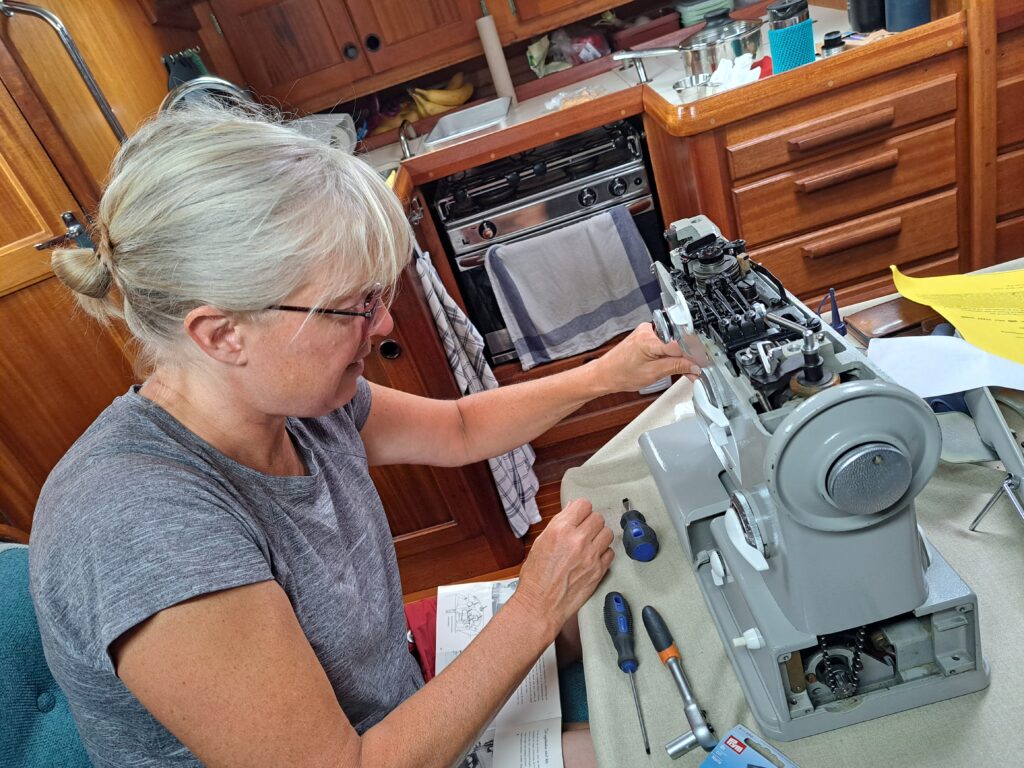
Once the maintenance of the sewing machine was done, we decided to go for a walk with other sailors to the famous lighthouse. The lighthouse is built of fort São Miguel Arcanjo. Its location offers a fantastic view over the bay of Nazare and the coastline to the north and south. It is also the best spot to see the Nazaré big wave challenge that takes place every year in Nazaré. A collection of surfboards of several surfers who have been surfing the giant wave of Nazaré is stored inside the fort together with some quotes from them. They were all so thankful for being able to surf the giant wave, while we were as thankful not to experience it.
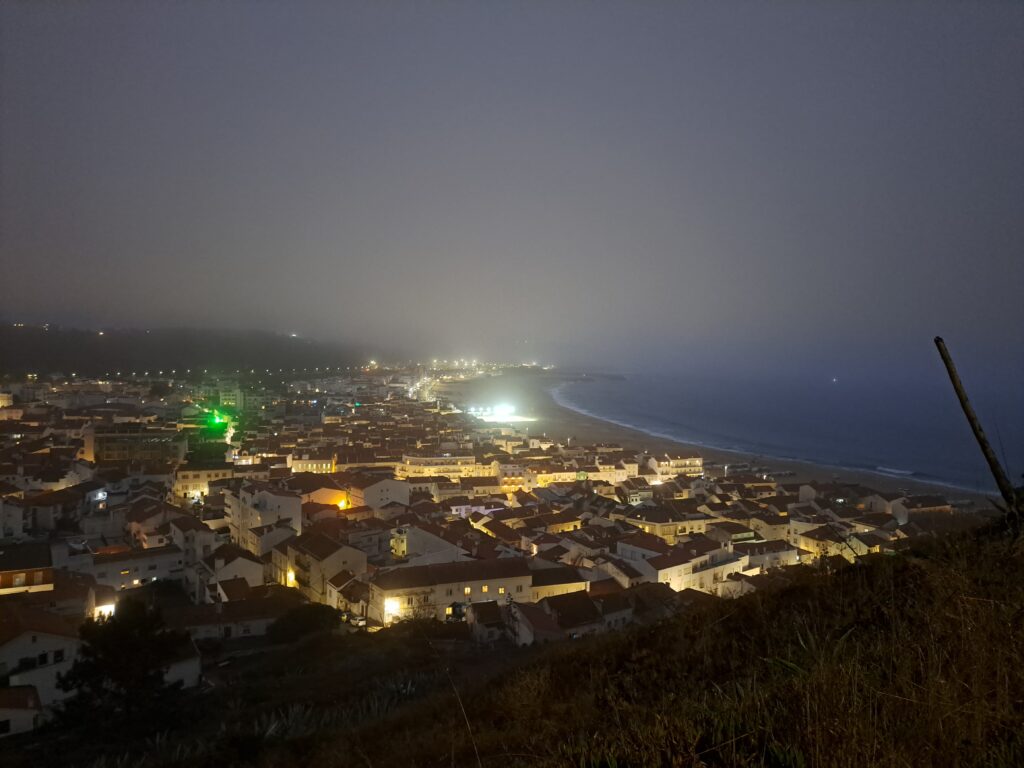
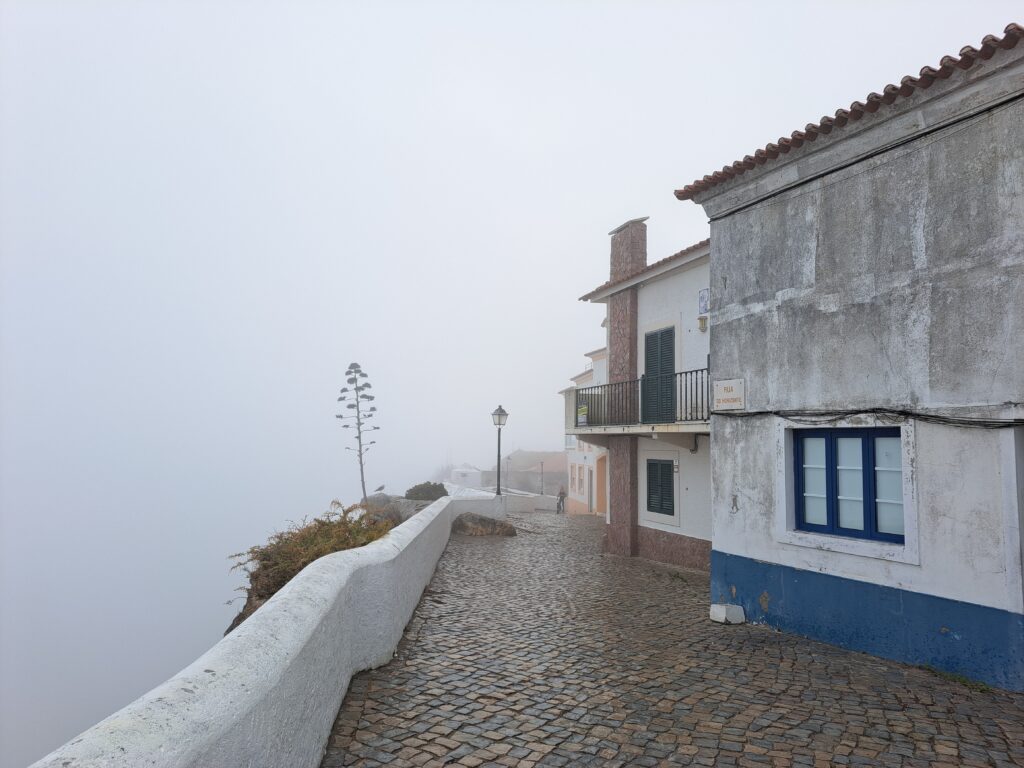
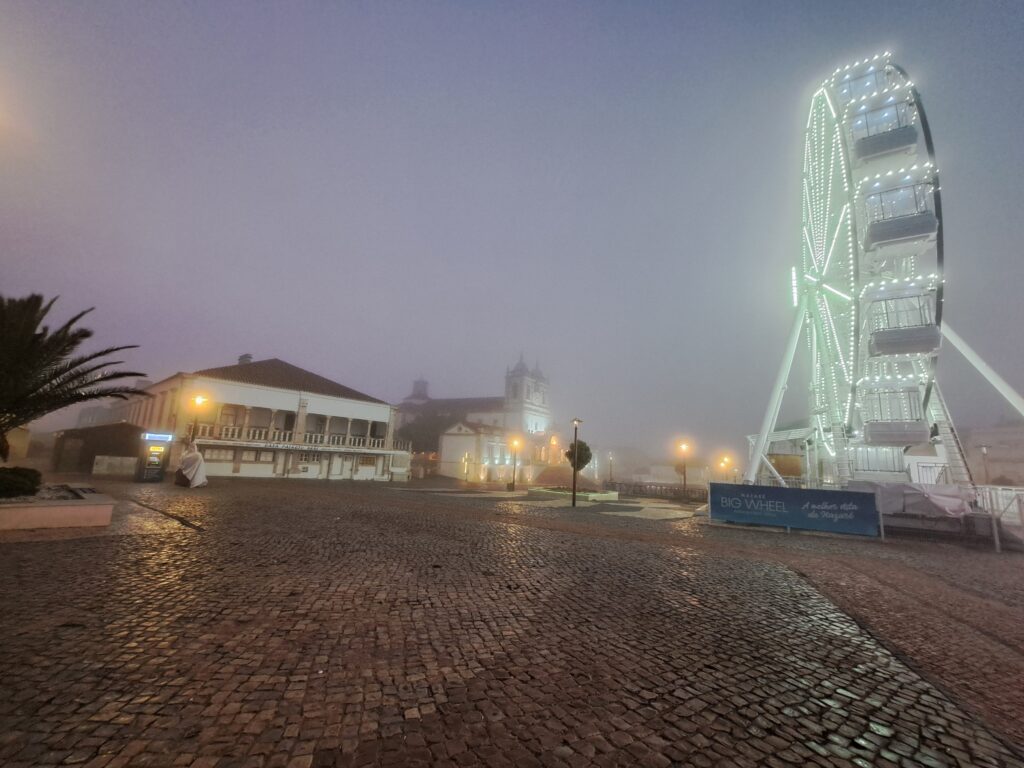
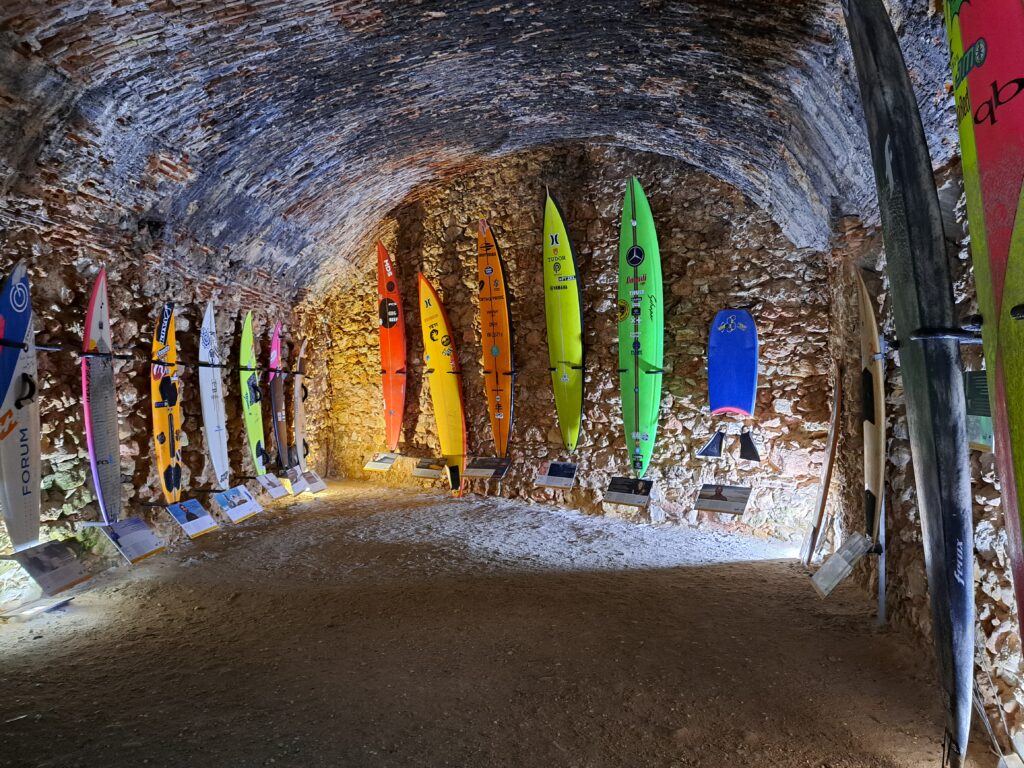
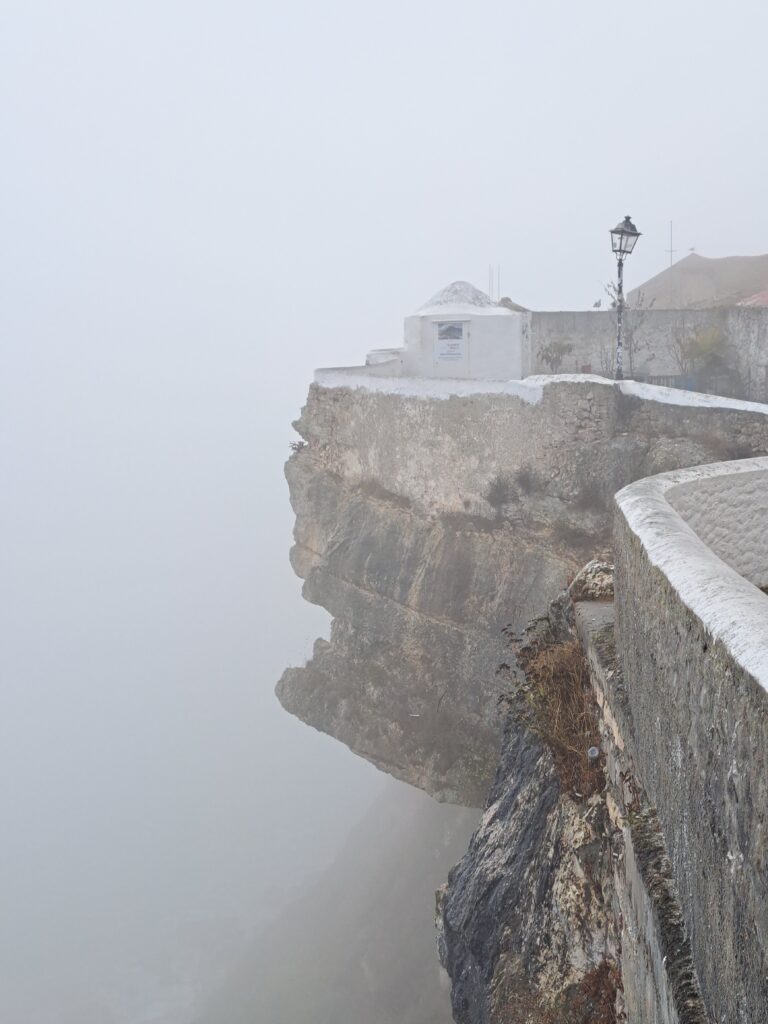
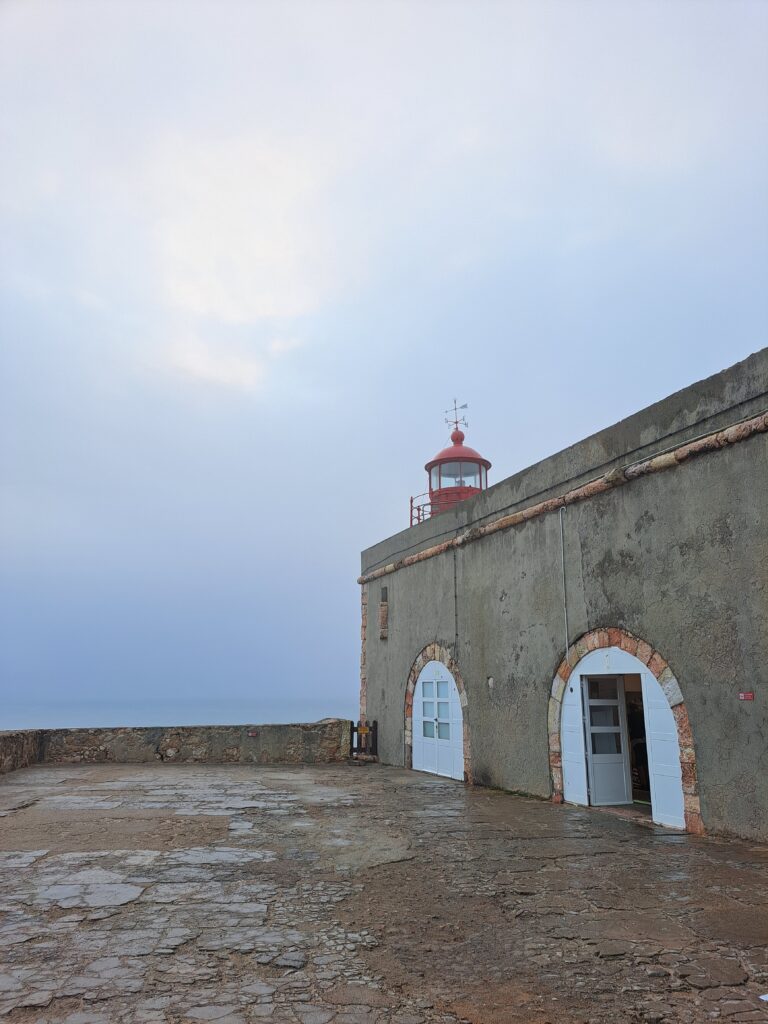
The day after, the sky slowly cleared up in the morning so we could enjoy some time on the beach but the swells washing the beach were quite big making dangerous any attempt to go swimming. It was still a great spectacle to watch.
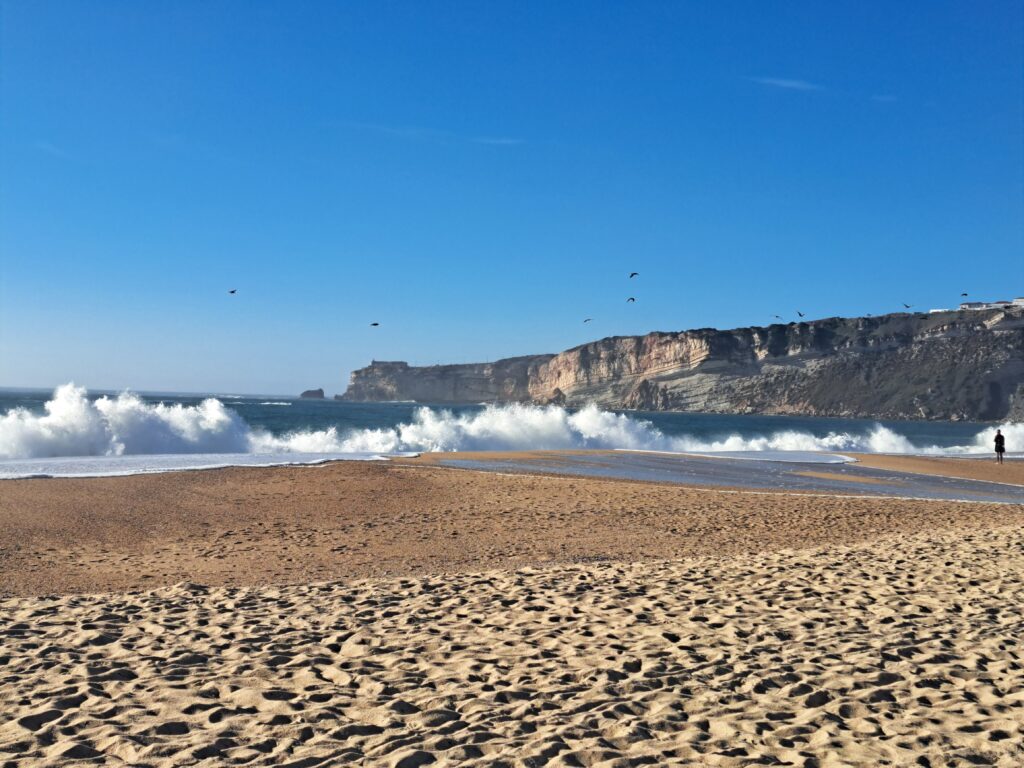
Nazaré was truely a lovely and relaxed place to stay. We read about sailors on their way around the world never setting the sails back after they ended up in a place they fell in love with. They planned to stay for a few days. These few days became weeks, then months, they found a job, met friends and built a whole new life. We were not there yet. We left Nazaré on Friday (September 12) to head towards the small town of Peniche, 22 Nm southwards, making some distance towards Cascais.
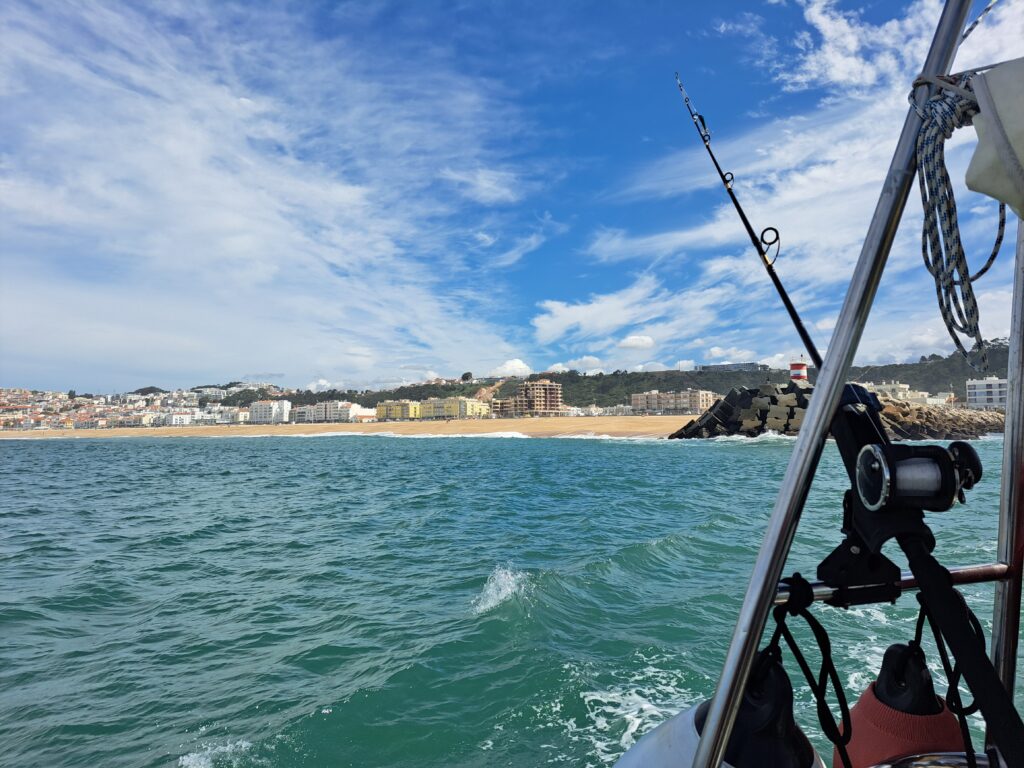
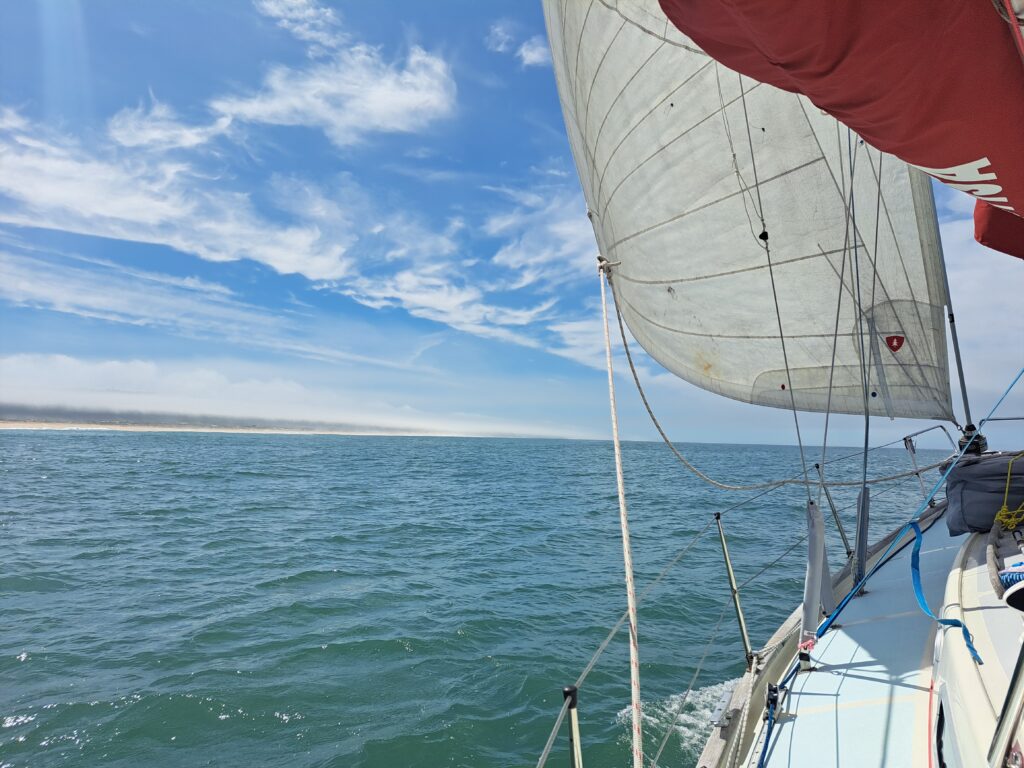
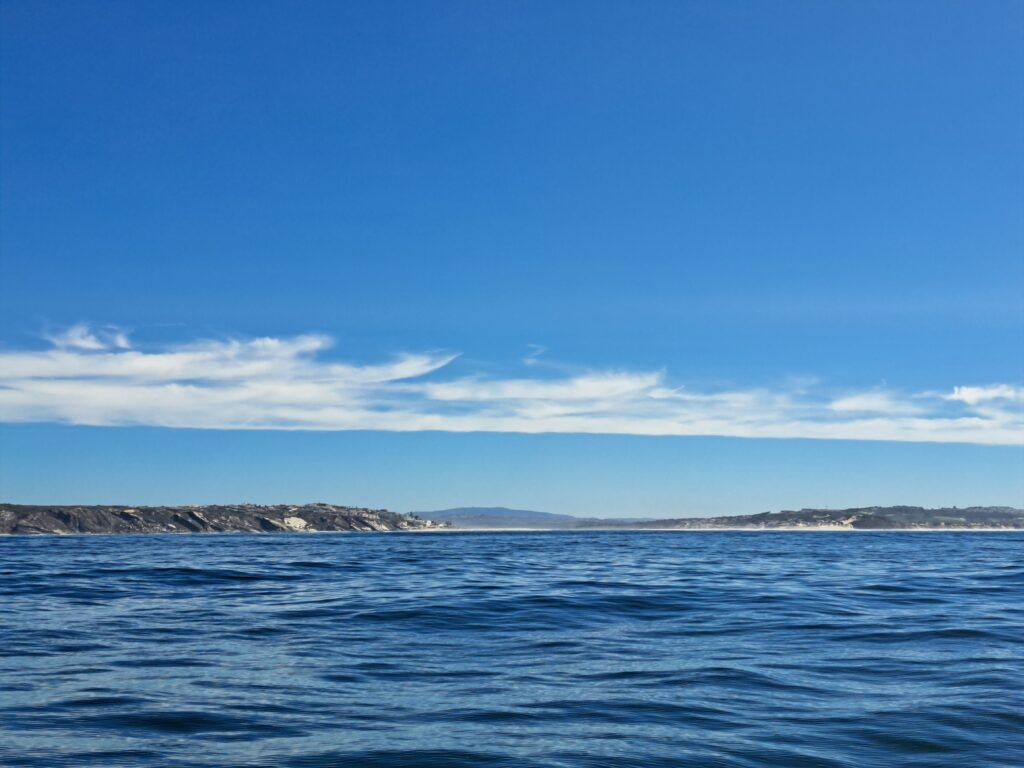
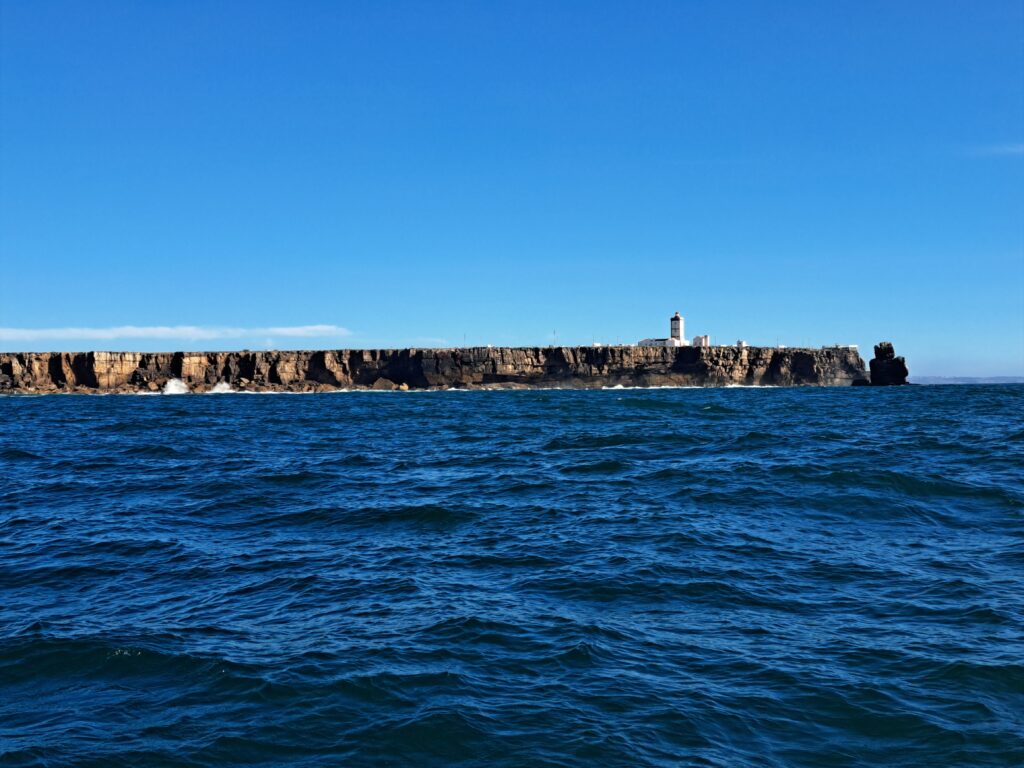
On the way we crossed the path of several “Portugese man of war” also called bluebottle, a curious creature that looks like an inflatable jelly fish but it belongs to a complete different family.
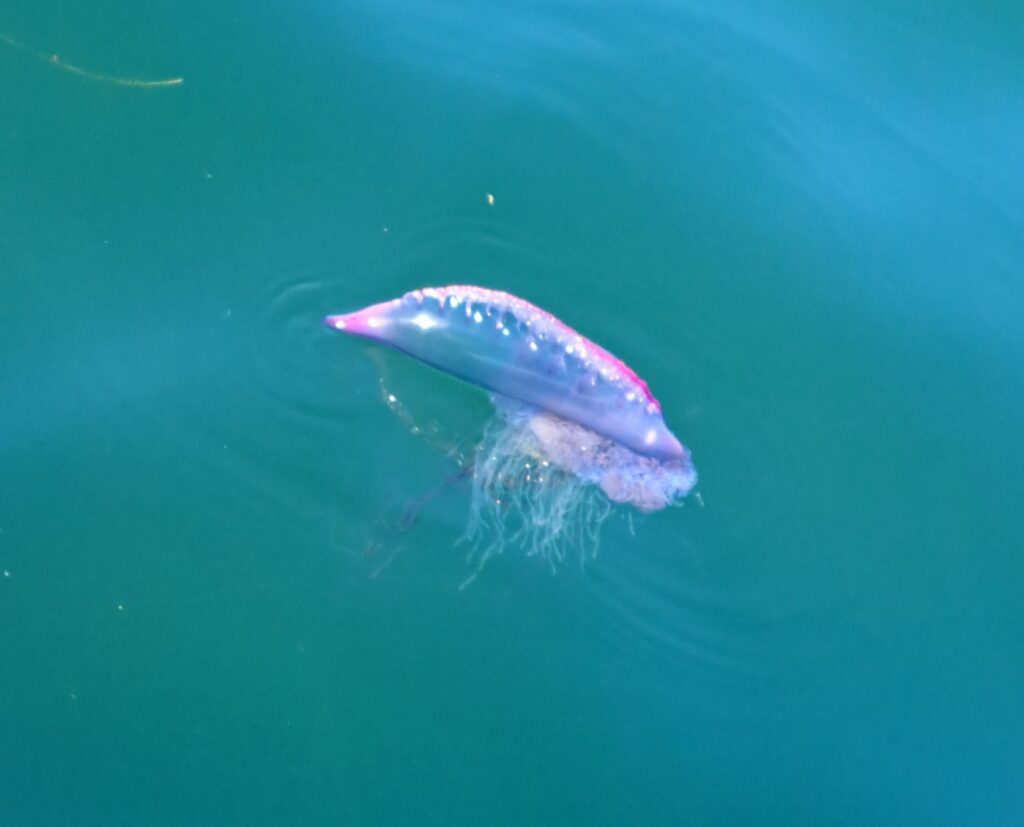
We covered the short distance to Peniche in about 5 hours out of which 2 were on engine.
We didn’t know much about Peniche prior to arrival. For us it was just a good harbor to make a break on the way down to Cascais and wait for better winds. Our Reeds Almanac was also not very positive about the harbour. But what we discovered was a cute town with interesting tourist attractions. We spent some time in Forte de Peniche, an old military fort that was used during the Estado Novo dictatorship as a prison and rehabilitated today as a museum to remember the dark years of the dictatorship, to honor the memory of those who spent a part of their life or lost it between those walls and to remind us that freedom and democracy is nothing we should ever take for granted.
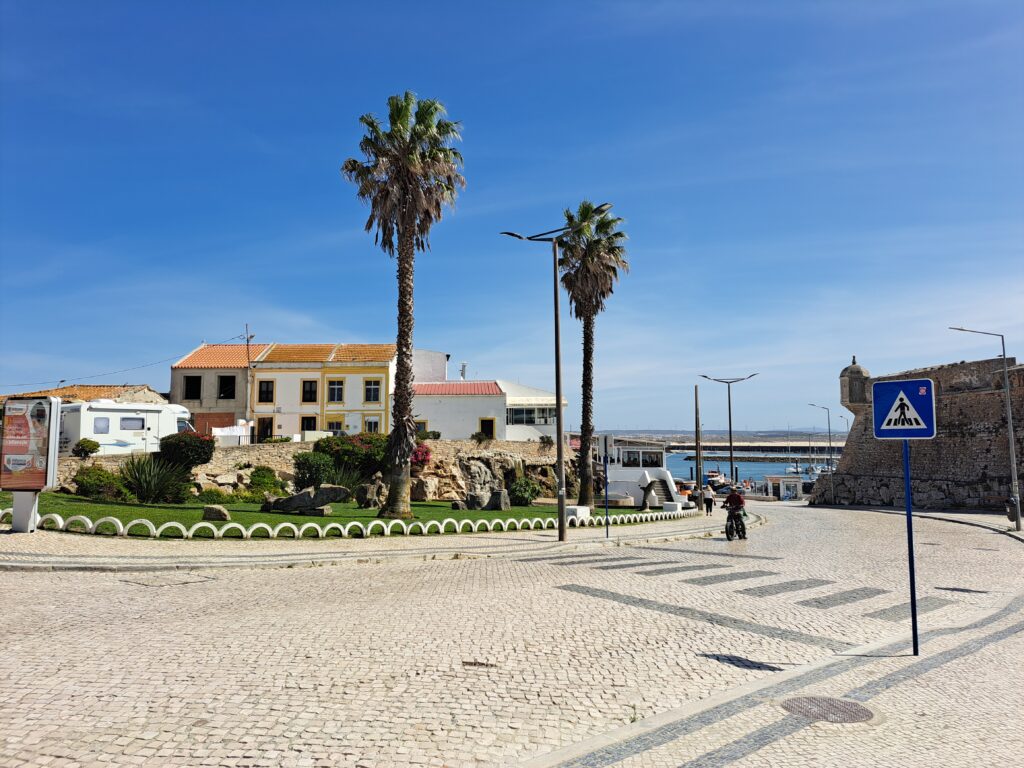

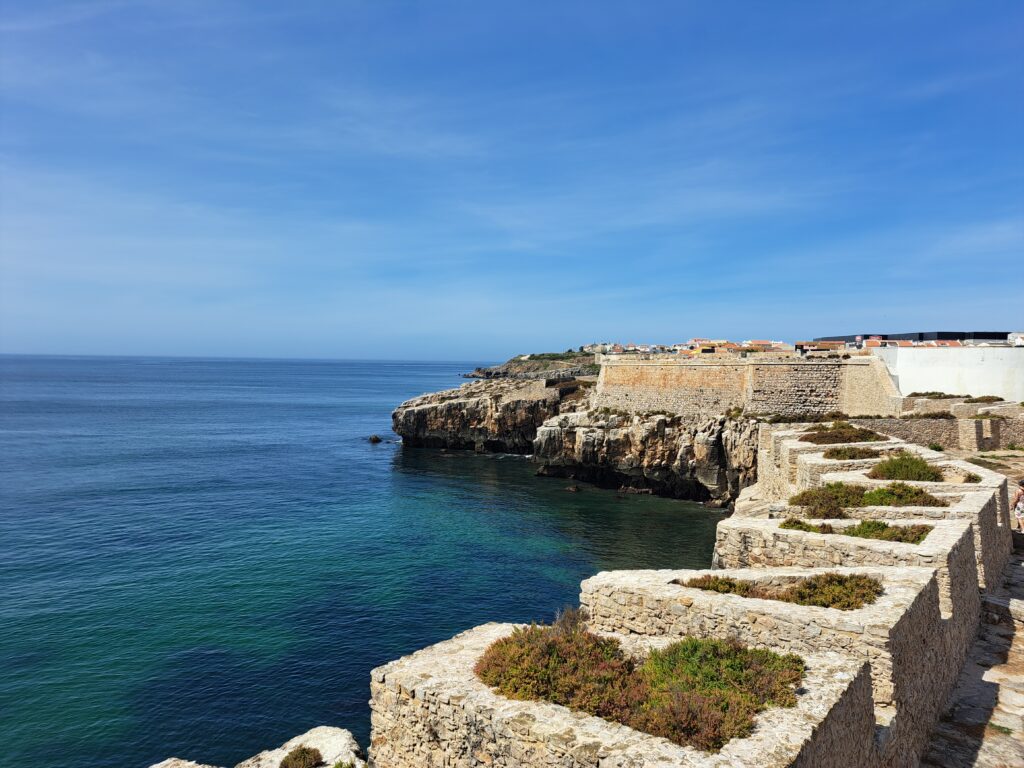
During the stay in Peniche, Maria also completed the protection for the windlass.
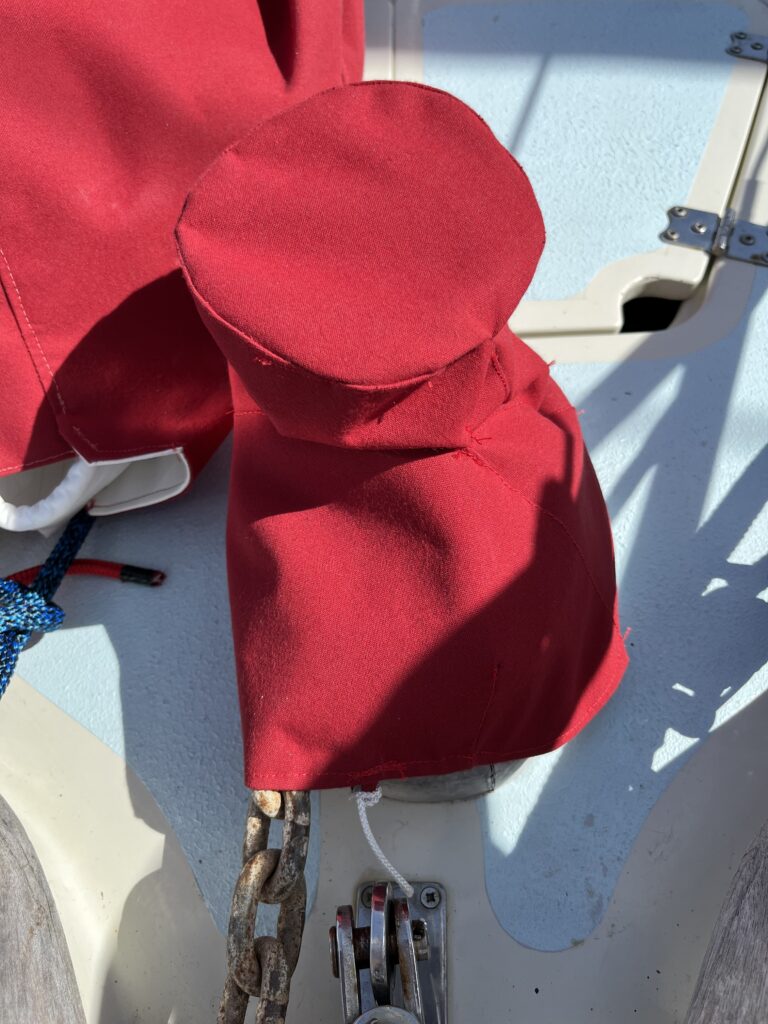
We left Peniche after 2 nights and headed towards Cascais where we intend to make a longer stop and prepare Lovisa for the crossing towards Madeira. We sailed all the 43 Nm downwind in winds increasing up to 15 m/s when we approached Cascais. We have seen that the coast of Portugal is quite straight with only a few protected areas that have harbors. Several coastal villages in between do not seem to have any connection with the sea (no harbor). This is the first time we have seen coastal villages without sea connection.
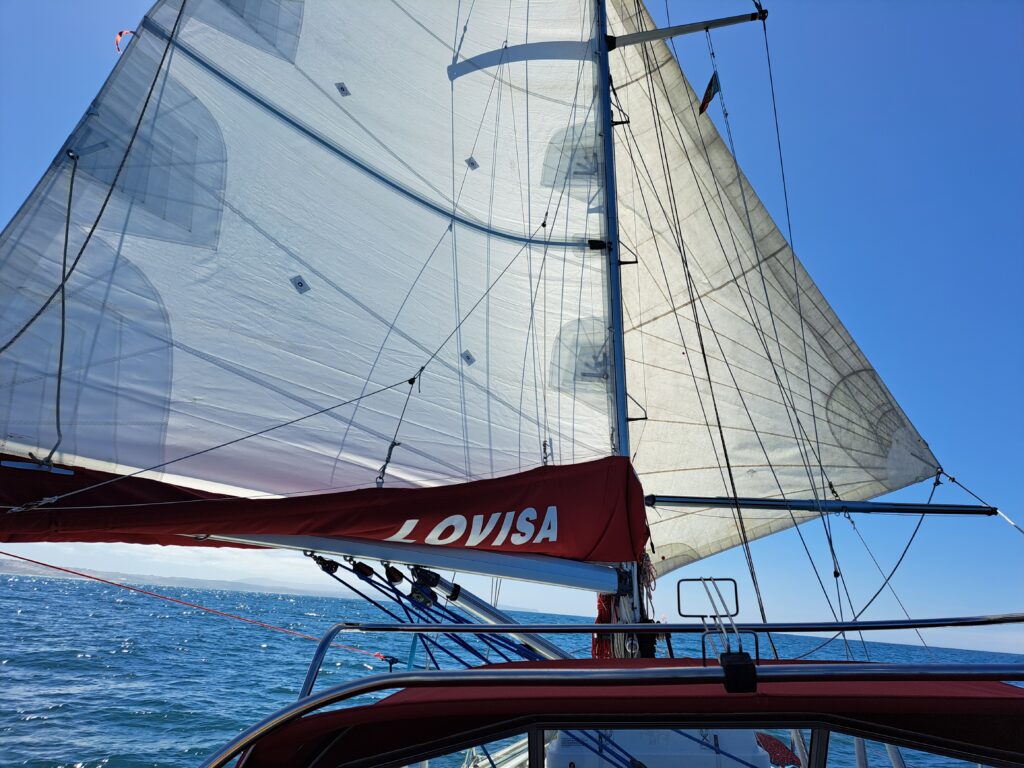
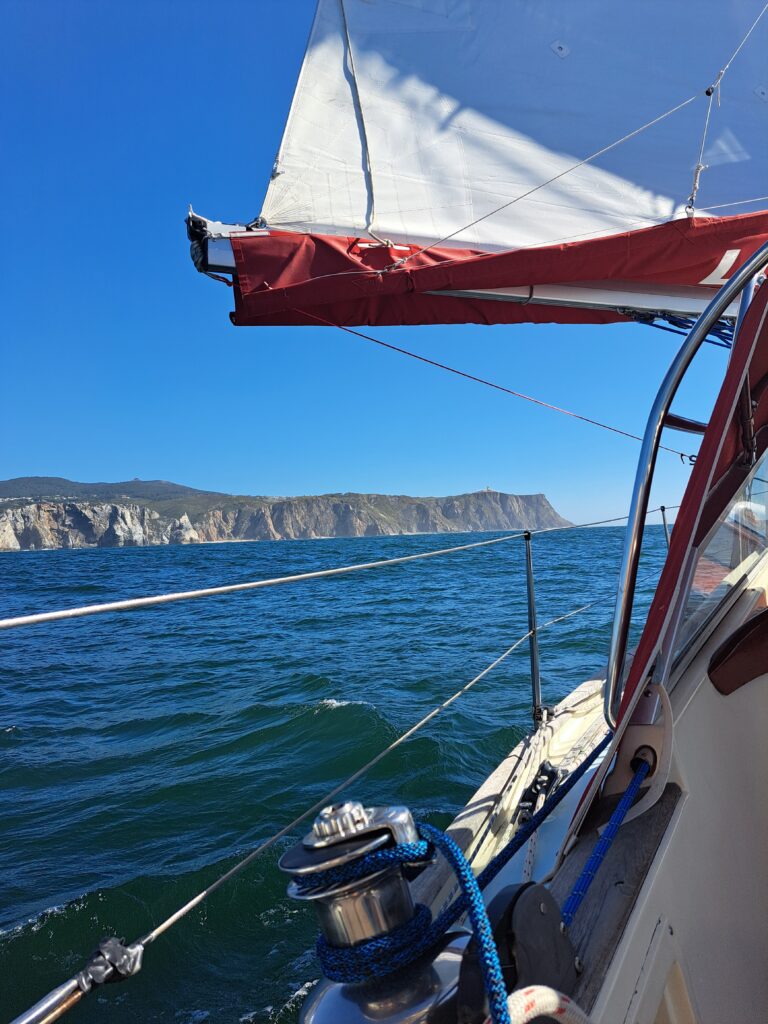
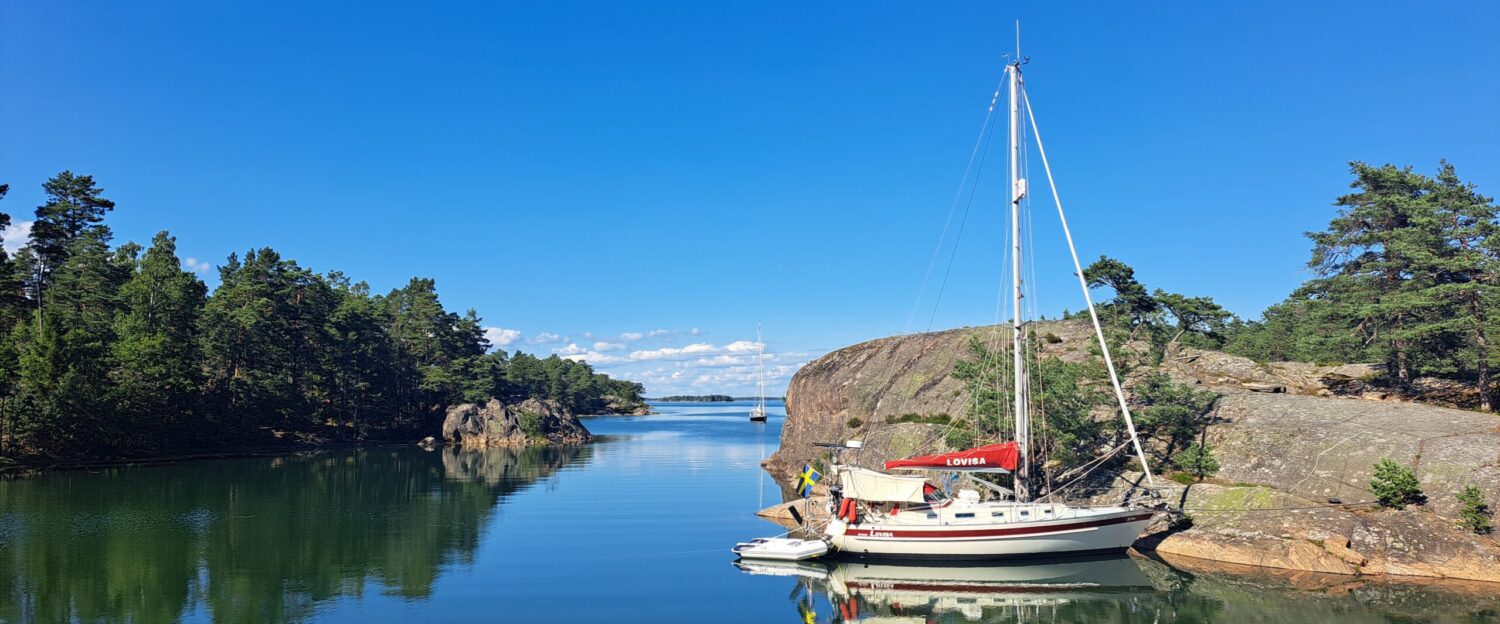
❤️Trop bien! Hâte de lire la suite !
Prenez soin de vous.